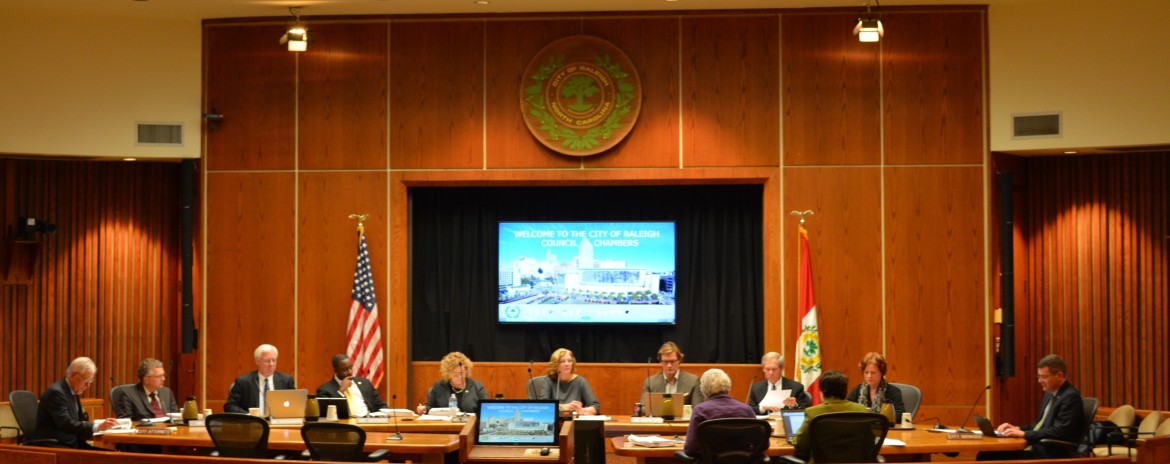Last week, we previewed what would be coming up at City Council with our Agenda Preview, an in-depth look at the issues scheduled for discussion before council. Today, we bring you The Council Record, an informal but nevertheless comprehensive look at the most recent City Council meeting.
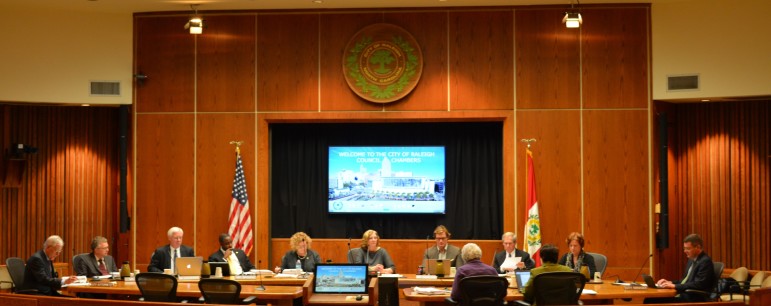
January 19, 2016
As always, the Raleigh City Council meeting last week began with an invocation, led this time by Revered Dr. H.C. Miller and the Pledge of Allegiance, led by Councilor Corey Branch.
Presentations & Awards
Marjorie Salzman, president of the Sister Cities Association of Raleigh, was the first to address the Council. Salzman said the organization has hosted “over 50 delegations of over 800 citizens in the last 30 years.” Some of Raleigh’s sister cities include Xiangyang, China, Nairobi, Kenya and Compiegne, France.
In celebration of Raleigh’s Sister Cities 30th anniversary, Salzman said, the association will be hosting a number of events over the coming months, including an international student panel discussion, a taste of our city event, a public art project and more.
For more information on the organization, you can visit their website.
This was followed by an update on a new center built by the Wake County Boys and Girls Club. Ralph Capps spoke on behalf of the organization, noting that the center had opened at 721 North Raleigh Boulevard in August of 2014. The city had provided a $250,000 capital grant in 2012 to assist with the center’s construction.
The center offers everything from a technology center to a music studio to a fitness center and a commercial kitchen that the “teens have nicknamed the Protein (Pro-teen?) Grill,” Capps said.
Councilor Branch thanked the organization, noting that he could remember back when it was just “The Boys Club.”
“I want to thank you for all you do, and for your continued work,” Branch said.
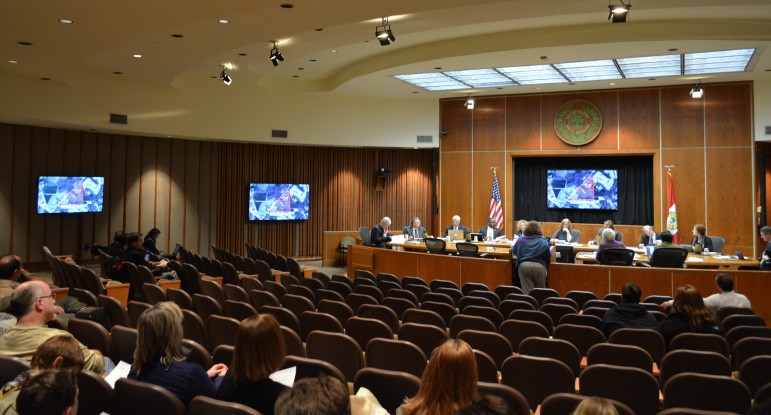
Consent Agenda
Four items were pulled from the consent agenda and the rest were passed with unanimous consent. For a look at what some of those items were, check our Agenda Preview from last week.
The first item pulled was 6.1, the Urban Pollinator Grant Award. Councilor Mary Ann Baldwin requested recusal from the vote; it passed unanimously.
Next up was another grant item, the Wake County Healthy Community Grant. Councilor Russ Stephenson pulled the item so that Council could formally thank city staff and all those involved in securing the grant.
The money, Stephenson said, will help the city look into improving walkable access to parks and greenways, and improve the health, life and safety of citizens. Councilors voted unanimously to accept the grant.
Item 7.3, the Safelight Interlocal Agreement, which sees the city pass along revenue from its Safelight red light program to Wake County Schools, was pulled and approved to be held in order to give Councilor Dickie Thompson further time to review the details of the program.
The final item pulled was 11.1, which dealt with the condemnation of several properties for the second phase of the Hillsborough Street redevelopment project. Councilors Stephenson and David Cox both had questions for staff on the project, asking how long the public input process had lasted and whether they had considered certain design alternatives.
Specifically, Cox wanted to know if a transformer that was going to be buried at a certain intersection could be moved underneath the street instead, as to avoid interference with the existing property. This, Council was told, would not be possible due to the number of underground utilities already in place.
The approval for condemnations was eventually granted unanimously by Council.
Report & Recommendations of the Planning Commission
The Planning Commission last met on January 12; for a write-up of the meeting please see last Monday’s edition of the Development Beat.
Three of the items from that meeting were brought before Council last week. The first was a text change that would modify the way in which story heights are measured in buildings.
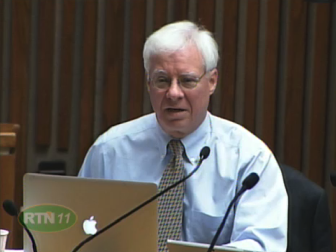
Councilor Russ Stephenson
Councilor Stephenson expressed concern that the new language, which defines story height as a measurement from the “top of the finished floor to bottom of the floor above,” was not specific enough.
“Is that the bottom of the decking, the bottom of the structure when we’re talking about the floor?” Stephenson asked.
Ken Bowers, the City’s planning director, responded to Stephenson’s concerns.
“We would suggest scheduling the public hearing to allow input, and Council can further massage the language to deal with any lack of clarity,” Bowers said.
Council unanimously approved the Planning Commission’s recommendation to schedule a public hearing on the matter for February 3.
The next item, Z-34-13, involved a long-gestating rezoning case on Hillsborough Street. As we wrote in the Agenda Preview: This rezoning case at 6117 Hillsborough Street would rezone a property currently marked R-10 and R-4 to all R-10. This would allow for a community mixed-use development. Several neighbors took issue with the case and filed a Valid Statutory Protest Petition last year.
The applicant was requesting a final 60-day extension, and “has indicated that they have a new confidence they can find common ground” with the neighborhood, Planning Commissioner Steven Schuster told councilors.
Councilors appeared reluctant to grant another extension. After being told that the case had been in the works for more than two and a half years, Mayor Nancy McFarlane responded flatly, “OK.”
Schuster said if the extension was not granted, the case would simply come before Council for a public hearing without a recommendation from the Planning Commission, as they had recommended approval for the extension.
The extension was granted unanimously.
The last item was another rezoning case, Z-39-15. It would allow for a 78-unit apartment complex on the 1800 block of Trailwood Drive in West Raleigh. Planning Commission recommended approval of the case, and a public hearing date of February 2 has been requested.
Councilor Kay Crowder asked instead that the case be sent to the Growth and Natural Resources Committee for further review. Her request was approved unanimously.
Special Items
The Dangerous Dog Ordinance was a matter of discussion before Council again last week, with City Attorney Thomas McCormick explaining that several issues had been brought to his attention that were worth looking into, and that he could present an updated version of the revised ordinance at a future Council meeting.
“Mr. Stephenson had an excellent suggestion, he wants to make sure in enclosures for dogs that we have a childproof latch,” McCormick said. Another issue that had come up, McCormick said, was the possible rehabilitation of dogs classified as “dangerous.”
“The rehabilitation of dangerous dogs is something I don’t know a lot about,” he conceded.
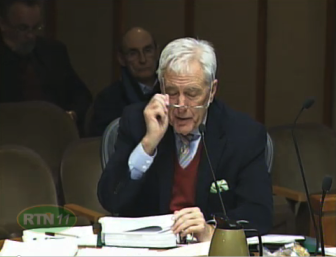
City Attorney Thomas McCormick will look into psychological help for dangerous dogs
“I can maybe work with some local vets to see what kind of psychological help is available for these dogs, if any.”
Council agreed to hear the item again in March, which will allow Councilor Baldwin, who has worked extensively on the ordinance, the opportunity to vote on its approval.
The next item was a rezoning case, Z-38-15, that Council had heard previously at a public hearing on January 5. At the time, the applicant agreed to a condition that would limit the number of single-family homes in the development to 57. Those conditions were submitted to the city, and Council voted unanimously to approve the rezoning.
The final Special Item was also the most contentious issue of the day: a two hour parking zone on Toxey Drive near St. David’s school. Although there are parking restrictions in place on the west side of the street, and the residents were seeking similar restrictions for the east side.
Commuters to St. Mary’s frequently park along the street, creating traffic and accessibility issues that residents would like to see reduced. A parking lot is currently being built to help alleviate some of the parking issues, but neighbors are concerned that it won’t be enough.
Councilor Crowder agreed with the neighbor’s concerns, saying that Toxey was a “very difficult road to drive on; often you can’t get through it.”
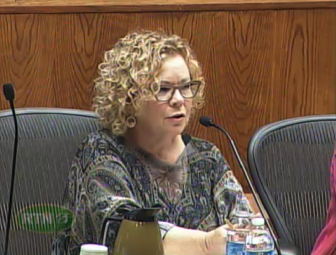
Councilor Kay Crowder
Councilors Crowder and Stephenson argued that the people in the neighborhood deserved a break, but Councilor Bonner Gaylord expressed concern that if Council moved too fast, they could “make it worse for the neighbors” by making it difficult for visitors to find parking.
“The better solution is a parking lot; the ideal future state is a parking lot. We have a pathway to achieve this ideal future state,” Gaylord said.
“100 percent of the neighbors agree with this,” Stephenson argued.
Councilor Thompson sided with Gaylord, pointing out that this was the most difficult time of year to do an asphalt parking lot project, and that Council should delay implementation of the restriction until March or later.
Councilor Branch said if the parking lot did end up alleviating the neighbors concerns, and they wanted to lift the restrictions, they could simply request this at a future date.
Thompson made a motion to delay approval of the restriction; it was voted down. Council eventually voted to approve the two-hour parking restriction 5-3. Gaylord, Thompson and Baldwin voted against it. As this was the first hearing of this ordinance, it would have required 6 votes to pass. It will be heard at the next Council meeting.
Report of the City Manager
The City Manager’s report to Council last week consisted of two transit-related items.
Tim Bender, from the City’s planning department, was the first to present. He was there to give Councilors an update on Wake County’s 10-Year Transit Plan.
He explained that the plan had been developed over the past year with the involvement of multiple agencies and a “very robust” community input process.
While the plan includes a number of elements, including commuter rail and increased bus service along major routes, the “most important element” of the plan for the City of Raleigh, Bender said, was the planned increase in the frequent urban bus network. It would expand to include 83 miles of “frequent” network and 20 miles of Bus Rapid Transit Network.
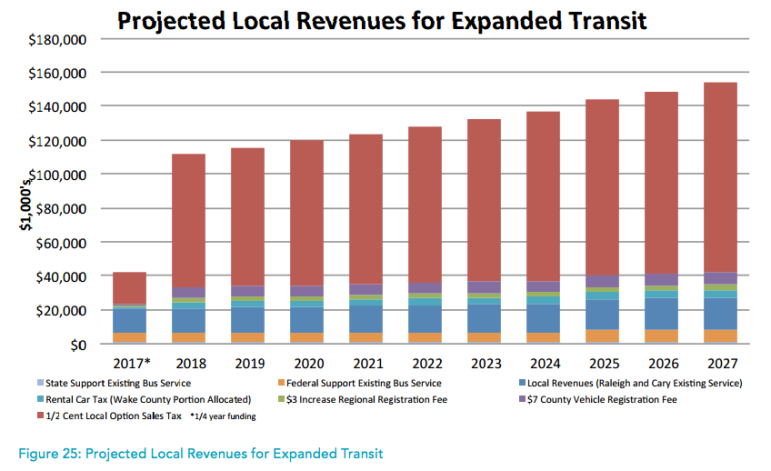
The plan will be funded through a number of elements, including vehicle rental taxes, vehicle registration fees, $18.6 million from the city and, most importantly, a half-cent sales tax increase that needs to be approved by the County. If it is, it would make up the majority of the funding for this plan. The total projected budge is $2,398,000,000. That’s $2.3 billion, in case you thought that was a typo.
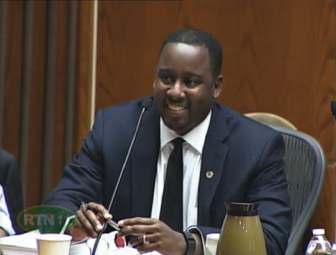
Councilor Corey Branch
Commissioner Branch, who previously served on the Wake County Transit Advisory Board, questioned whether the plan would reduce service on existing routes within the city.
Bender said he didn’t have a “perfect answer” for Branch, but “What I can say … I don’t think there’s going to be services that are pulled because of the plan.”
Branch said he would discuss the issue in more detail with Bender afterward.
Noted Branch, “I want to make sure Raleigh proper is taken care of as we help support and connect the entire Triangle.”
Councilor Baldwin said those involved with future transit planning should take into account the possibility of new and updated technology, which would potentially allow for better, cheaper service throughout the region.
Next on deck was Transportation Planning Manager Eric Lamb, who was on hand to seek Council approval to move forward with a grant from the US Department of Transportation.
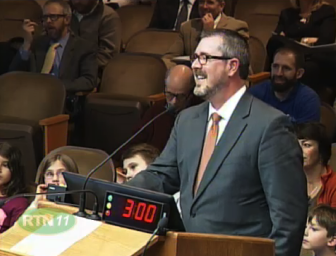
Transportation Planning Manager Eric Lamb
Lamb spoke eagerly of the of the Smart Cities Challenge, a “very unique grant opportunity that the USDOT has put out; it’s never been done before in this manner, it’s very bold.”
The grant was asking cities to come forward with ideas anticipating future technologies and developments, and looking to implement some of the idea’s found in the DOT’s Beyond Traffic: 2045 analysis piece.
As the grant was limited to cities with a population between 250-800,000, Lamb said this meant there were only 64 eligible cities for this “winner-take-all” grant.
“It’s a pretty crushing time frame; this was sprung on everyone in December, and the application is due to the DOT on February 4,” he explained.
“They’ll select five finalists from the pool of applicants, and each will receive a grant of $100,000 to produce a more detailed application,” which will be due in May 2016. The winner will be announced in June.
Lamb said while he believed the city stood a good shot at winning the grant, they still faced a number of challenges, including a short time frame, the absence of an existing strategy and the need to develop a strong vision.
The Council expressed their faith in staff, and voted unanimously to approve moving forward with the grant.
“Eric, you can do it,” encouraged McFarlane.
Parks, Recreation and Greenway Recommendations
The Parks, Recreation and Greenway Advisory Board had only one item to present to Council last week, a master plan for Wooten Meadow Park.
The 21 acre property was donated to the city for a park or greenway use in 1996, and had been “rather underutilized” said Matthew Keough with the city.
One reason for this, he said, was that the property had been lacking a master plan, which would chart out the desired development and the desired use of the land.
Some of the unique features of the property include an urban stream and several potential walking paths.
Graham Smith with DHM Design, which is working on the plan with the city, said the redeveloped park would include a constructed wetlands area, that would be accessible via a boardwalk or an educational walk. Additionally, he said the park would give people the opportunity to “play freely, not organized play but free play.”
Trails, he said, were a “dominant design value” and a key part of the vision for the park’s future.
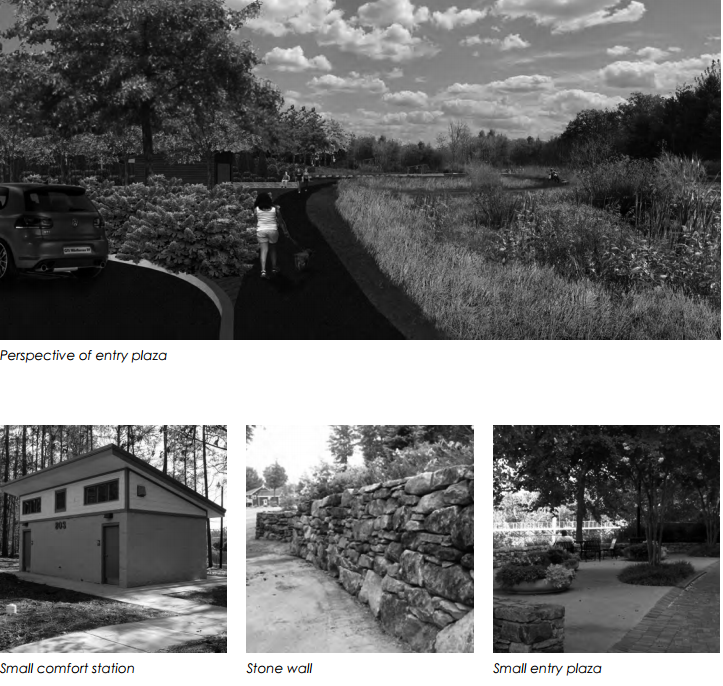
City of Raleigh
From the Master Plan
Councilor Gaylord said he was excited to enjoy the park with his family, and asked whether there would be any natural trails. Smith said they had developed a “sensitivity to not over-pave.”
The master plan was adopted unanimously by Council.
Raleigh Historic Development Commission Report
Don Davis, the vice-chair of Raleigh’s Historic Development Commission, was on hand to provide an update on actions the commission had taken over the past two years.
These included the issuance of 195 certificates of appropriateness over the past year and a number of promotional efforts for historic preservation throughout the city. They’ve also had interest from existing neighborhoods that wish to become historic districts, such as Anderson Heights.
Citizen Petitions
There were four citizen petitions on the agenda for last week’s Council meeting.
First up was Joseph Hartman, who wanted to request that the city implement 20 m.p.h. zones in certain residential areas. Currently, homeowners can request that the speed limit be lowered to 25 m.p.h., but only if they have a petition signed by 75 percent of the homeowners. Hartman suggested doing away with the petition requirement, and reducing the minimum speed limit to 20.
He cited a number of studies from other cities that had implemented a 20 m.p.h. restriction, which found a reduction in pedestrian and cyclist accidents.
Next up was Elizabeth Gardner from Neuse River Kids Club, part of the City of Raleigh’s Adventure Program, whose participants were on hand to announce the result of a fundraising drive they had held for a 6-week summer white-water/kayaking session.
As the program doesn’t have much funding, participants are required to bring their own gear. The kids on hand last week announced they were able to raise $330 to donate the City of Raleigh’s Adventure Program.
They were met with an extended round of applause from Council.
The next speaker was not as enthusiastically received. NOTE: The claims of this petitioner are at this point unsubstantiated. We are awaiting a response from the Raleigh Police Department.
Joseph Conover, Nova Agency Company Police Department, representing On Point Protection Agency and Global One Company Police, was on hand to discuss ongoing issues his officers had encountered with the Raleigh Police Department.
He alleged that the RPD had interfered with a number of arrests his officers were attempting to make within their jurisdiction, and on several occasions RPD had failed to come to their assistance.
When he brought these issues to RPD supervisors, he claimed these supervisors instructed their officers to investigate Conover’s officers, which undermined their ability to conduct criminal investigations.
After meeting with Chief Deck-Brown, Conover alleged that the Chief had her staff contact the Wake County District Attorney’s Office to open an investigation into their security business and to begin sending letters to customers, to regulatory boards and the Department of Justice to have their certifications pulled.
Council, Conover said, had ignored his claims, allegedly forwarding on a complaint he sent to them along to Deck-Brown with the note “Here’s another one for you.”
He requested that Raleigh police officers be instructed to not refer to his officers as “idiots” or “rent-a-cops” and to stop interfering with their investigations. Conover did note, however, that there “lots of exemplary officers and command staff” within the police department that he had worked well with.
Finally, Larry Booth, who spoke at the Council’s previous public hearing on January 5, was once again requesting further consideration of the planned relocation of an underground transformer vault at 3111 Hillsborough Street.
Planned as part of Phase II of the Hillsborough Street redevelopment, Booth said the location at a roundabout would create complications whenever Duke Energy needed to service the transformer.
“So in my opinion it creates a safety issue for pedestrians and traffic.”
Public Hearings
The first public hearing was for the condemnation of an unfit building at 532 Bragg Street. As no one was present to speak in favor of or against the condemnation, Councilors voted unanimously to approve the $14,125 demolition.
Next up was a resolution to place a lien against several properties whose owners had failed to pay abatement fees for public nuisance complaints. Two of the properties on the list, 1601 Thompson and 3812 Donna Road, were removed from the list, as their owners had paid the necessary fees.
Council voted unanimously to confirm the liens.
This was followed by a vote on the 2016 Limited Debt Obligation Funding, a move which is projected to save the City more than $2.7 million. Council approved it unanimously.
The final public hearing was for Z-15-15, a rezoning of a property on Spring Forest Road and Atlantic Avenue would change the land from Shopping Center Conditional Use to Commercial Mixed Use Conditional Use.
Michael Birch from Morningstar Law Group said the main difference between the existing zoning and the proposed rezoning is that it would allow for the development of two buildings on the property, rather than the current cap of one. The maximum square footage of 14,900 would remain in place.
A representative from Sheetz, which operates a location near the site, spoke against the rezoning, saying that the potential for a fast-food restaurant, quick-service auto facility or drugstore could greatly increase traffic in the area.
Council voted to close the hearing on the condition that the applicant submit a few additional conditions. The case will be heard again in two weeks.
Individual Councilor Reports
Following up on a presentation made to City Council on January 5, Councilor Baldwin requested that the City find $10,000 for the nonprofit Guiding Lights so that it would be able to continue its nurse training program. The organization was unable to receive city funding this year due to a new state law which delayed them from spending the previous year’s funds in time for the new application cycle.
This money, Baldwin said, could come from the Council contingency fund or from the $167,000 in unspent grant funding.
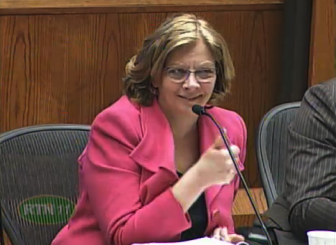
Mayor Nancy McFarlane Approves
Mayor McFarlane agreed that it was a worthwhile cause, and asked that the group submit certification. Council voted to get the process moving forward.
Several Councilors spoke highly of the retreat to Charlotte they had taken the week prior, saying it was a great learning experience.
Councilor Thompson announced that a meeting would be held for the RDU Master Planning Committee on January 28 at 6 p.m. at 711 Hillsborough Street. Members of the public, he said, are welcome to attend.
Councilor Branch, who helped begin the meeting with the Pledge of Allegiance, was also one of the last to speak, thanking Mayor McFarlane for the recent Martin Luther King Prayer Breakfast.
